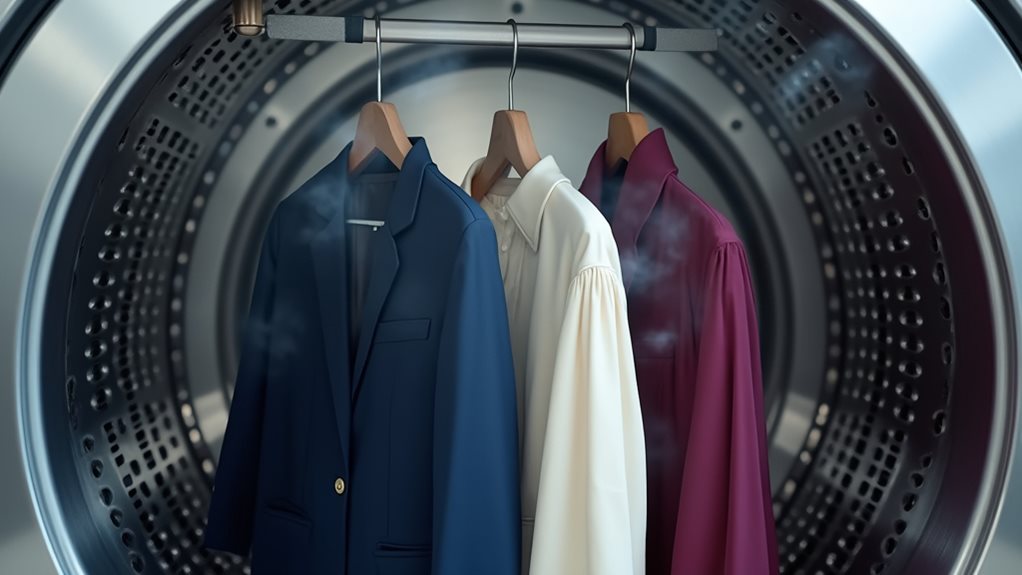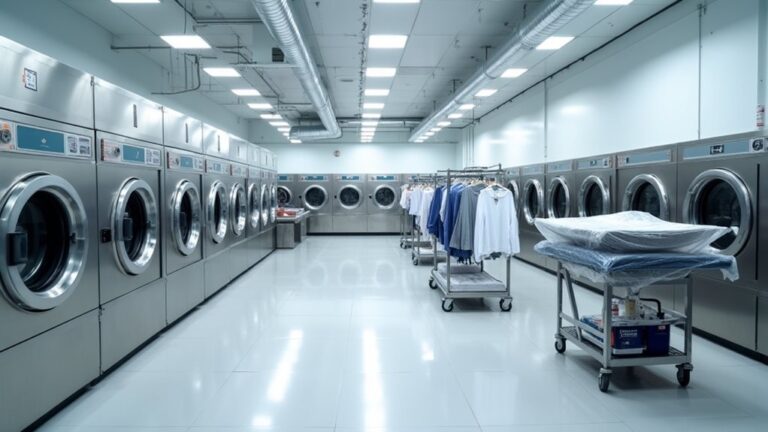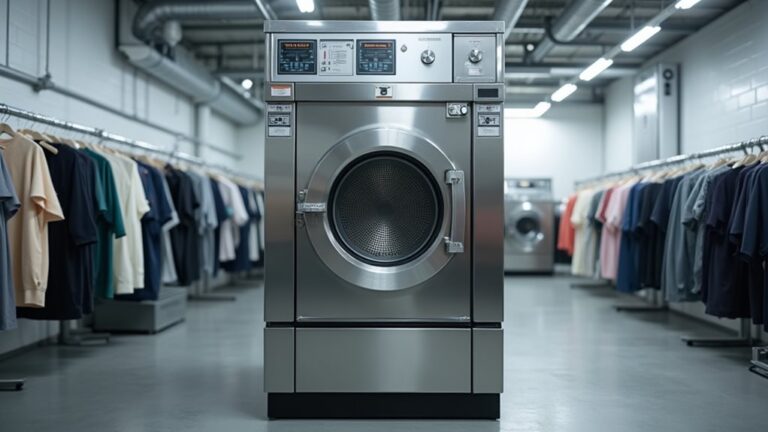Your clothes get a chemical bath instead of a water wash when you use dry cleaning machines, which pump perchloroethylene or eco-friendly solvents through your garments to lift oil-based stains without causing shrinkage. The machine then extracts 99.99% of the solvent through spinning, followed by warm air drying to remove any remaining traces, while sophisticated recovery systems capture and filter the used chemicals for reuse, making the process surprisingly environmentally responsible once you understand the complete cycle.
What Is Dry Cleaning and Why Use Chemical Solvents
When I first encountered dry cleaning as a teenager working at my uncle’s garment shop, I honestly thought the name was misleading – how could something be “cleaned” without water, right? 😅
Working at my uncle’s shop, I thought dry cleaning was a total scam – how do you clean anything without water?
What I quickly learned is that dry cleaning isn’t actually dry at all; it’s a sophisticated cleaning process that uses chemical solvents, primarily perchloroethylene (or “perc” as we called it), instead of water to remove stains and dirt from fabrics.
The genius behind this dry cleaning process lies in how these chemical solvents tackle oil-based stains and grease stains that regular washing methods simply can’t handle.
While your home washing machine might struggle with that stubborn salad dressing spot, dry cleaning machines excel at lifting these challenging marks because the solvents dissolve oils effectively.
Plus, delicate fabrics like silk and wool stay protected from shrinkage, though nowadays many shops are switching to environmentally friendly solvents for better stain removal without environmental concerns.
The complete process involves several key stages including garment inspection, pre-treatment of stains, agitation in solvent within the machine, and a distillation process that purifies and recycles the cleaning solution for future use.
Types of Solvents Used in Dry Cleaning Machines
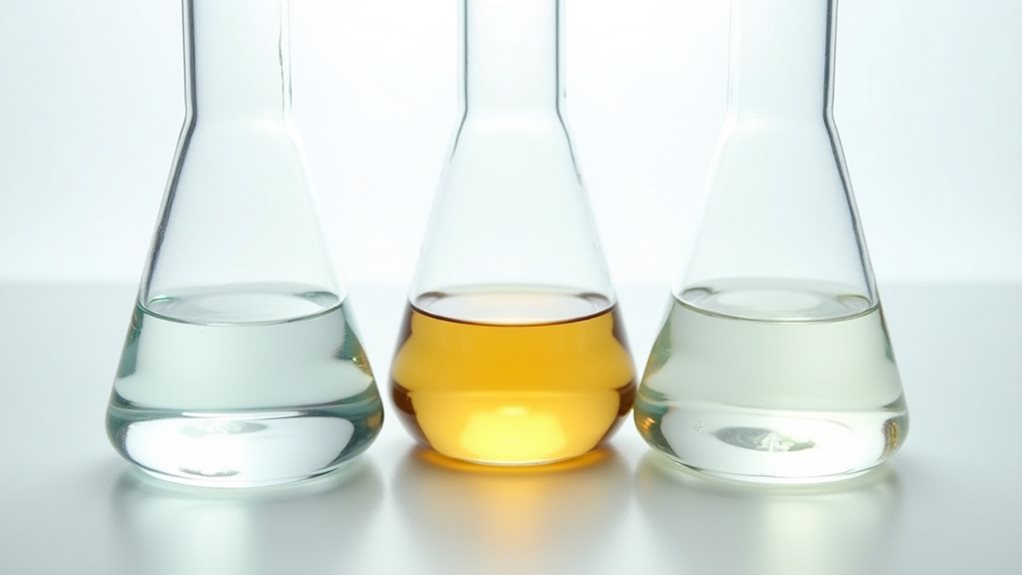
Although most people assume all dry cleaning machines use the same type of solvent, the reality is that modern cleaners actually have several chemical options at their disposal, each with distinct advantages and drawbacks.
You’ll find that perchloroethylene remains the traditional workhorse—effective at removing stubborn oil stains, though it comes with health concerns that make many cleaners nervous.
Alternative solvents like high-flash hydrocarbons offer safer handling, while liquid carbon dioxide represents the gold standard of environmentally friendly options (though it requires pricier equipment).
Eco-friendly options such as silicone-based solvents provide gentler fabric care, and here’s something that’ll surprise you: modern dry cleaning machines recover 99.99% of solvents used during each cleaning cycle, making solvent recovery incredibly efficient regardless of which chemical your cleaner chooses.
Other petroleum components like petroleum spirits and Stoddard solvent have also been employed in dry cleaning operations, though many establishments are transitioning to more environmentally friendly alternatives due to health and safety concerns.
Step-by-Step Dry Cleaning Machine Process
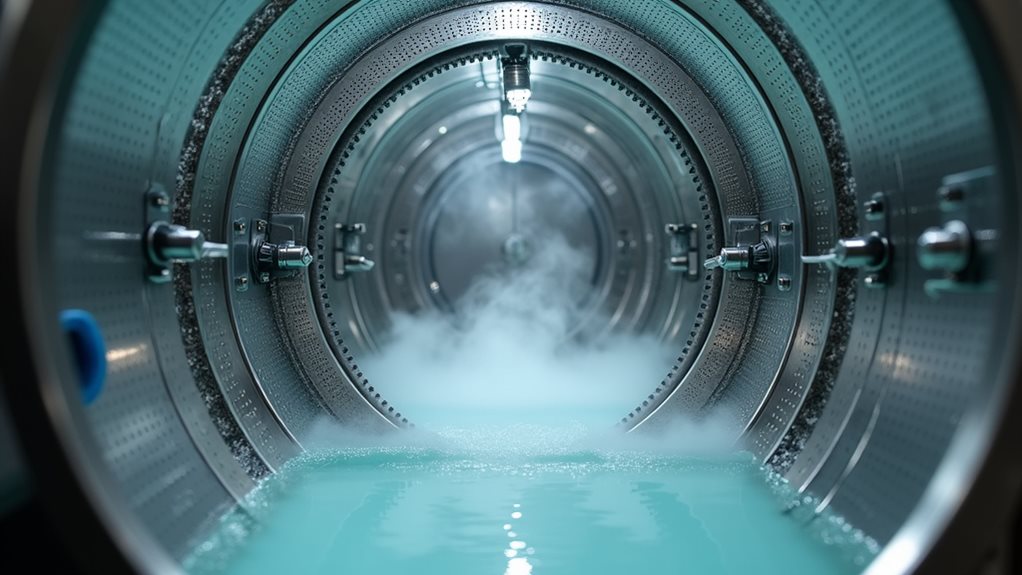
Five distinct stages transform your wrinkled, stained garments into pristine clothes ready for your closet, and I’ll walk you through each step so you can appreciate the fascinating choreography happening behind those mysterious dry cleaner doors.
First, your clothes get tagged and inspected—trust me, they’ve found everything from forgotten gum to loose change!
Next, dry cleaning machines gently agitate your garments in perchloroethylene solvent, lifting stubborn stains without water damage. The extractor then removes 99.99% of the solvent in an environmentally responsible way, because nobody wants wasteful cleaning processes.
Finally, the drying cycle uses warm air to eliminate remaining traces, followed by careful pressing that’ll make your clothes look better than new. This chemical-based process is particularly essential for maintaining delicate fabrics like silk and wool that would be damaged by traditional water washing methods. It’s honestly impressive how this cleaning process transforms even my most hopeless shirts!
Solvent Recovery and Recycling Systems
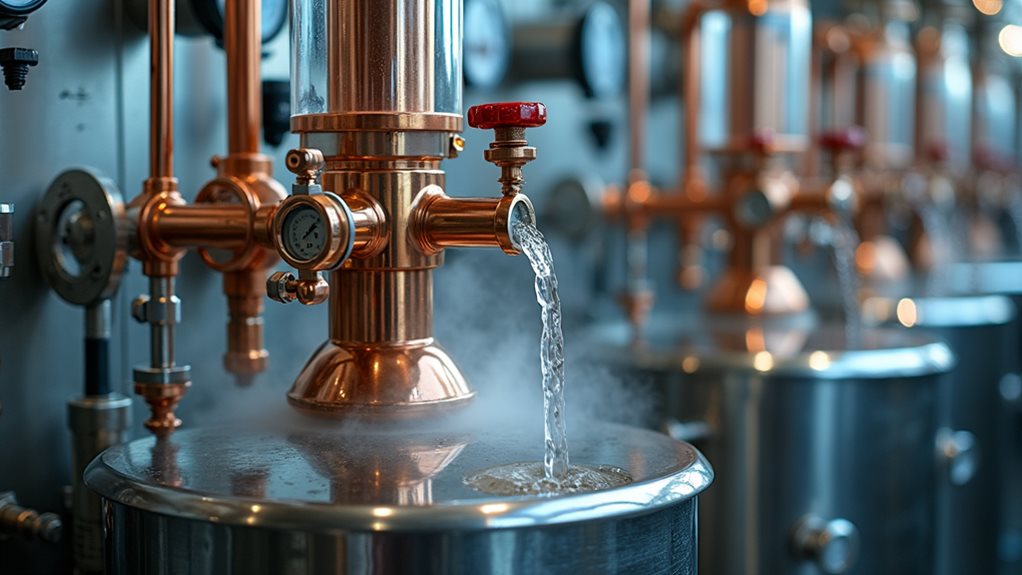
The ingenious solvent recovery systems inside these machines honestly amazed me the first time I learned how it works, because it’s basically like having a mini recycling plant that captures nearly every drop of that expensive perchloroethylene for solvent reuse.
After each cleaning process, these systems extract the used solvent, filter out impurities through a sophisticated distillation process, then reinject the purified liquid back into the machine for future cycles.
This incredible efficiency recovers 99.99% of the solvent, which prevents environmental contamination while saving operators serious money.
Regular monitoring and maintenance keep everything functioning seamlessly, guaranteeing compliance with health and safety regulations.
Modern dry cleaning has come a long way from the early days when carbon tetrachloride was the primary solvent, before being phased out due to serious health risks including liver toxicity and carcinogenic effects.
It’s honestly brilliant engineering that turns what could be wasteful into something remarkably sustainable!
Machine Components and Safety Features
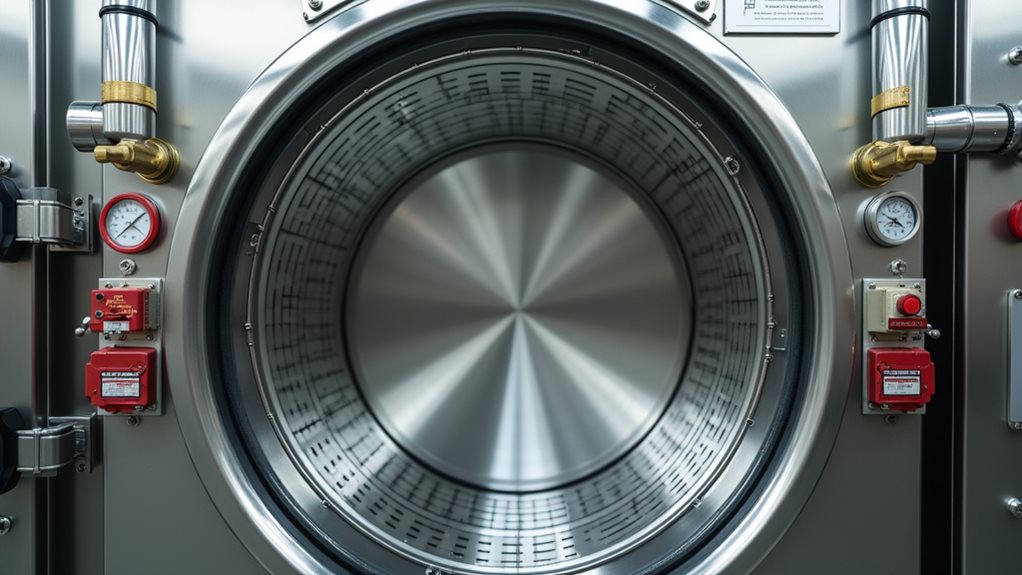
Engineering marvels hide behind those unassuming dry cleaning machine doors, and I’ll never forget the first time a technician walked me through each component while explaining how they work together like a perfectly choreographed dance.
The solvent tank serves as the heart, pumping cleaning fluid through filters while gentle agitation works its magic on your delicate fabrics.
You’ll find impressive safety features throughout these dry cleaning machines, including ventilation systems that minimize chemical exposure and automatic shut-off mechanisms preventing overheating disasters.
The cleaning process relies on sophisticated solvent recovery systems that recycle nearly 100% of chemicals, dramatically reducing environmental impact.
Modern machines even monitor performance automatically, guaranteeing worker safety while maintaining peak operation standards.
These machines often utilize perchloroethylene or eco-friendly alternative solvents to effectively clean garments without the use of water.
Benefits and Limitations of Machine Dry Cleaning
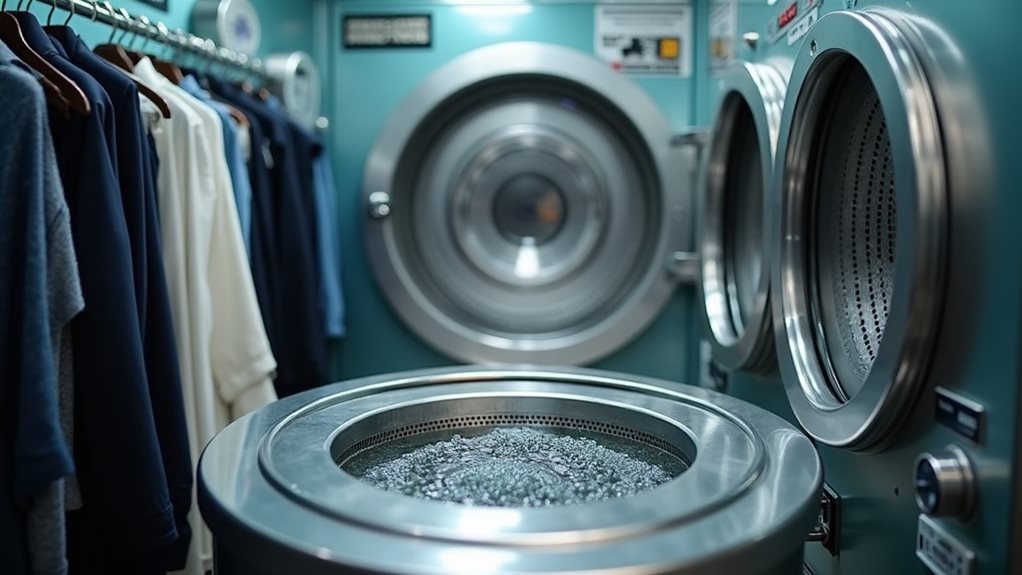
While watching my favorite silk blouse emerge pristine from a dry cleaning machine after I’d accidentally spilled red wine on it during a dinner party, I realized just how remarkable these machines truly are at preserving our most delicate garments.
Machine dry cleaning offers incredible advantages you’ll appreciate:
- Fabric Protection: Dry cleaning solvents like perchloroethylene gently clean delicate fabrics without water damage, while controlled agitation preserves fiber integrity throughout the cleaning process.
- Health Benefits: The process provides thorough garment sanitization, eliminating bacteria and viruses through heat and chemical treatment.
- Environmental Efficiency: Modern machines recover 99.99% of solvents, reducing environmental impact considerably.
However, you should know that water-based stains often resist these solvents completely.
The professional pressing and finishing techniques used by dry cleaners result in a crisp, polished look that’s difficult to achieve with home washing methods, particularly for structured clothing items like suits and formal wear.
That’s why proper stain pre-treatment becomes absolutely essential for ideal results!
Environmental Impact and Alternative Technologies
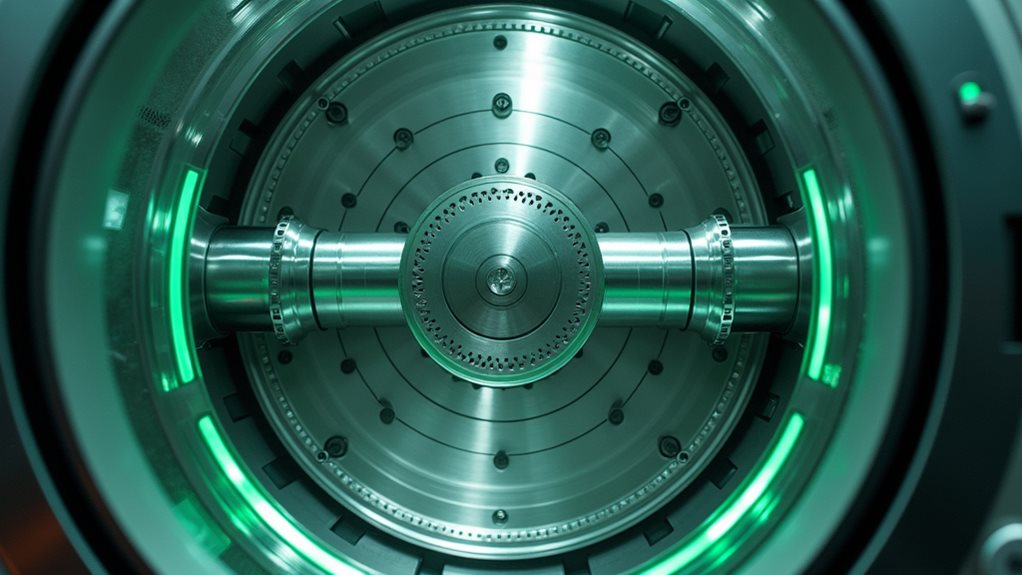
Despite these impressive cleaning capabilities, I couldn’t help but wonder about the environmental cost when I learned that my neighborhood dry cleaner was switching from traditional solvents due to new EPA regulations.
You see, perchloroethylene has been the industry standard for decades, but its environmental impact finally caught up with reality.
Modern dry cleaning machines now adopt alternative technologies like liquid carbon dioxide cleaning and biodegradable solvents, which honestly makes me feel better about dropping off my work clothes.
The solvent recovery systems in today’s equipment capture 99.99% of chemicals for reuse, while energy-efficient practices and eco-friendly cleaning methods dramatically reduce each facility’s carbon footprint – proving that sometimes change really is for the better! 🌱
Prolonged exposure to PERC can also cause nervous system damage, dizziness, and headaches, making these alternative methods not just better for the planet but safer for workers and customers alike.

